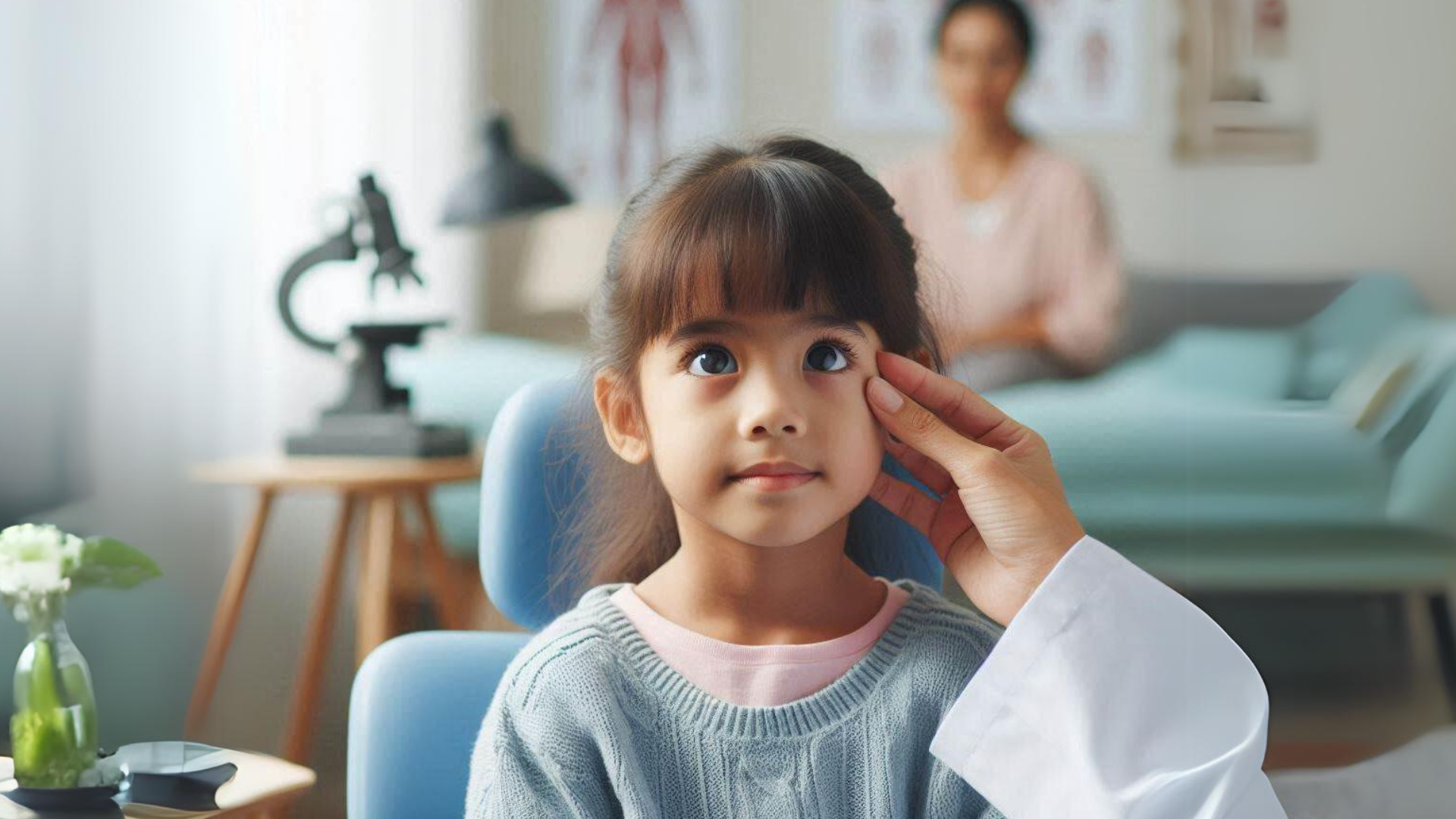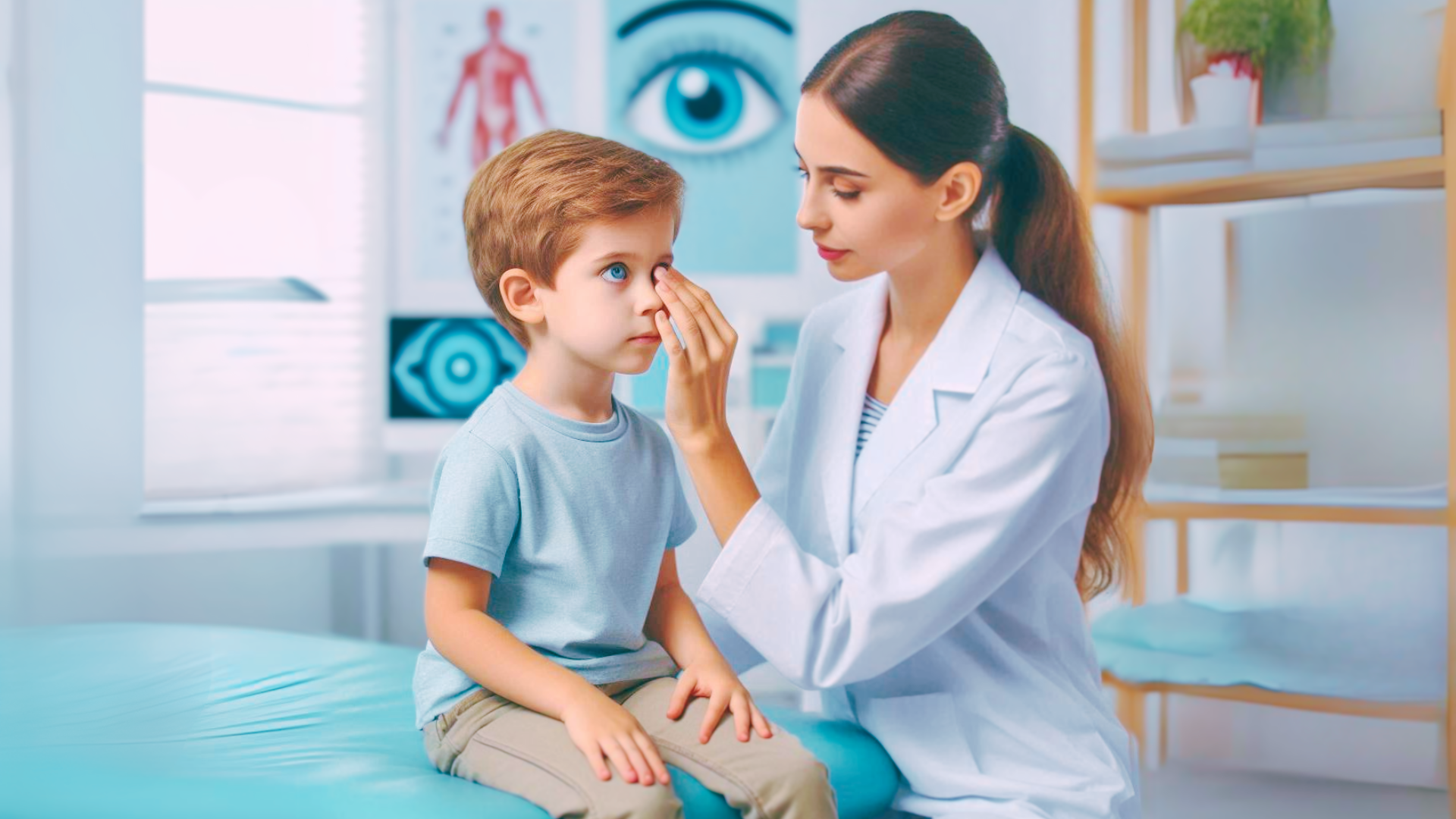What is Amblyopia? Common Questions
Amblyopia, also known as “lazy eye,” is a vision disorder that usually starts in early childhood and can continue into adulthood if not treated. It causes a decrease in vision in one eye and affects about 2-3% of the population. Despite being common, many people don’t know much about its causes, symptoms, and how to treat it. This article will answer frequently asked questions about amblyopia to help clear up any confusion around this condition. Whether you’re a parent worried about your child’s vision, someone diagnosed with amblyopia, or just interested in eye health, this guide will provide important information on how to understand and handle amblyopia.
What is amblyopia?
Amblyopia, often called “lazy eye,” is a vision disorder where one eye does not develop clear vision, even with glasses or contact lenses. It usually starts from birth and can develop up to the age of 7 years. The condition happens when the brain and the weaker eye do not work well together. This causes the brain to rely more on the stronger eye. If not treated early, the brain might start to ignore images from the weaker eye completely, which can lead to permanent vision problems.
What causes amblyopia?

Amblyopia, also known as “lazy eye,” happens when differences in how the eyes focus or structural problems in the eyes interrupt normal vision development in children. The main causes of amblyopia are various vision issues and structural abnormalities, such as:
Refractive Errors
These errors occur because of issues in the shape of the eye or its ability to focus, leading to blurry vision. If you do not treat these, they can cause amblyopia. Common refractive errors that can lead to amblyopia in children include:
- Myopia (Nearsightedness): Difficulty seeing distant objects clearly.
- Hyperopia (Farsightedness): Difficulty seeing close objects clearly.
- Astigmatism: Distorted vision caused by an irregularly shaped cornea.
Strabismus
Strabismus happens when the eyes do not line up properly. Usually, both eyes should move together. If one eye moves on its own, the brain might rely more on the other eye and ignore the misaligned one.
Structural Eye Conditions:
Any physical problem that affects how the eyes work can also cause blurry vision and lead to amblyopia. These include:
- Ptosis (Droopy Eyelids): This problem can be severe if one eyelid droops enough to block part of the child’s vision.
- Cataracts: Clouding of the lens inside the eye, which makes vision blurry.
- Corneal Issues: Problems with the cornea, the clear front part of the eye, can also impact vision.
These issues underscore the need for early detection and treatment to prevent amblyopia and ensure children’s eyes develop correctly.
Types of amblyopia
Amblyopia, also known as “lazy eye,” is a vision disorder that starts in early childhood when one eye doesn’t develop clear vision. This causes the brain to prefer the other eye. There are several types of amblyopia, each caused by different issues:
- Strabismic Amblyopia. This type happens when the eyes are not aligned, a condition known as strabismus. One eye may turn inward, outward, upward, or downward compared to the other, resulting in crossed eyes or a wandering eye. The brain ignores the visual input from the misaligned eye to avoid seeing double, which makes the eye weaker.
- Refractive Amblyopia. This type comes from big differences in vision errors, like nearsightedness, farsightedness, or astigmatism, between the two eyes. This can happen even if the eyes are perfectly aligned. The brain prefers the eye that sees more clearly and neglects the other eye.
- Deprivation Amblyopia. This form is due to something blocking light from entering and focusing properly in one eye, such as a congenital cataract. The blockage leads to poor visual development in the affected eye.
- Anisometropic Amblyopia. A subtype of refractive amblyopia, this occurs when there’s a significant difference in the prescription strengths needed for each eye. This can happen without any visible misalignment of the eyes or cataracts. The brain focuses on the eye with the lesser vision error, weakening the eye that has more severe vision errors.
Each type of amblyopia has different causes but similar effects in reducing vision in the affected eye. Early diagnosis and treatment are key to improving vision and avoiding long-term visual problems. Treatment often includes correcting the root cause, encouraging the use of the weaker eye through patching or blurring the stronger eye, and using glasses or contact lenses to correct vision errors.
Amblyopia Symptoms

Amblyopia is hard to spot because it usually starts from birth up to age 7 and often shows no obvious signs. Here are some possible symptoms of amblyopia:
- Poor Visual Acuity: The clearest symptom is one eye seeing worse than the other, which might only be noticed during an eye exam.
- Squinting or Shutting One Eye: Children with amblyopia may squint or close one eye in bright light or when trying to see something clearly.
- Eye Strain: The child may complain about eye strain or headaches, especially after reading, doing close work, or watching TV.
- Poor Depth Perception: Amblyopia may make it hard to judge distances, which can become obvious when doing things like catching a ball.
- Eye Misalignment: In cases with strabismic amblyopia, the eyes don’t look in the same direction. One eye might turn in, out, up, or down while the other eye looks straight.
- Tilting the Head or Abnormal Posture: Children might tilt their heads or use unusual postures to see better.
- Difficulty with Fine Motor Skills: Because of poor depth perception and weaker vision, children might find it hard to do tasks that need fine motor skills, such as coloring neatly, putting puzzles together, or playing games that require good hand-eye coordination.
What does a lazy eye look like?
An amblyopia doesn’t always look noticeable. Unlike other eye conditions, the signs of amblyopia might be subtle or even invisible to someone looking at it. Here are some signs that might indicate amblyopia, although they can vary and might not always be visible:
- Eye Misalignment: When amblyopia is linked to strabismus, or misaligned eyes, one eye may not line up with the other. This might look like one eye turning inward, outward, upward, or downward, while the other eye looks straight.
- Squinting or Shutting One Eye: You might see someone frequently squinting or closing one eye, especially in bright light or when trying to see something clearly. This might be their way of dealing with blurred or double vision.
- Unequal Pupil Size: Less commonly, amblyopia might show up as different pupil sizes between the two eyes.
- Head Tilting: A person with amblyopia might tilt their head or use an unusual posture to see better or to make up for the weaker eye.
Amblyopia Risk factors
Amblyopia has several risk factors that can increase the likelihood of developing this vision disorder. Understanding these factors is crucial for early detection and treatment. Here are some of the main risk factors associated with amblyopia:
- Family History:Amblyopia can run in families. If close relatives have had amblyopia, misaligned eyes (strabismus), or big differences in vision between their eyes, a child is more likely to develop it too.
- Prematurity: Babies born too early or with a low birth weight are more at risk. This is often because their eye structures haven’t fully developed or they have other health issues that affect the eyes.
- Developmental Disabilities: Children with conditions like cerebral palsy or Down syndrome are more prone to developing amblyopia.
- Strabismus: Having misaligned eyes is a big risk factor. If one eye consistently points in a different direction, the brain might start ignoring its visual input, which can lead to amblyopia.
- Significant Refractive Errors: If there’s a large difference in vision needs between the two eyes, such as one eye being much more nearsighted or farsighted than the other, or one having more astigmatism, the brain might prefer the clearer-seeing eye.
- Visual Obstruction: Any condition that blocks light from entering and focusing properly in the eye during early childhood can cause amblyopia. Common causes are congenital cataracts, droopy eyelids, or any cloudiness in the cornea.
- Lack of Proper Eye Screening: Not getting regular eye exams can be a risk factor. Without these checks, conditions that lead to amblyopia might not be noticed and treated during the important early years of visual development.
Understanding Amblyopia
In conclusion, amblyopia, or “lazy eye,” is more than just a common childhood condition; it is a serious vision disorder that can significantly impact an individual’s quality of life if left unaddressed. Understanding the signs, causes, and treatments of amblyopia is crucial for early detection and effective management. We hope this article has answered your key questions about amblyopia, providing you with the knowledge needed to recognize potential symptoms early and seek appropriate care. Remember, early intervention is the best way to ensure a positive outcome, so regular eye exams are essential for maintaining healthy vision throughout life. Whether for yourself or for your children, staying informed and proactive about eye health can lead to better vision and a better quality of life.
